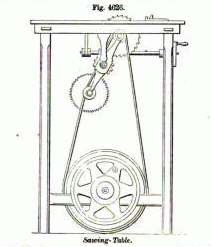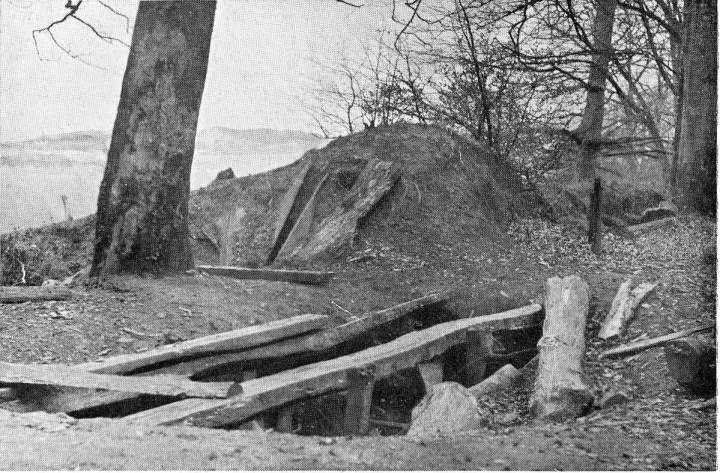
Today we’d like to pay some well-earned honor to one of the most important inventions in our industry (particularly the lumber-processing part of it): the circular saw. Like many products of the industrial revolution, the history of the circular saw is a story founded on legend as much as fact — both of which are equally as interesting.
What Is A Circular Saw?
The circular saw is perhaps the most commonly used saw today, used extensively in both professional construction projects and DIY home improvement. This power tool uses a round metal blade edged with sharp teeth to cut an array of material such as woods, metals, cement block, brick, fiberglass, plastics and slate.
The blade in a circular saw spins around mechanically to provide a clean cut to the material and can either mount to a table or be used in left-handed or right-handed handheld equipment. Various blades are used to cut different types of material most effectively.
Using a circular saw is quick and effective. Simply adjust the saw for the proper height and depth, line it up to where you want to make a cut and push it with enough force to glide it across the material but without pushing too hard. This ease of use is what has made the circular saw popular in numerous applications since its invention in the 1700s.
Inventing the Circular Saw: A Brief History
It’s commonly told that Samuel Miller was awarded British Patent #1152 in 1777 for what is considered the first circular saw machine. Some assert that the wording in his patent indicates the circular blade itself was in common use by that time — it was the sawing machine itself that Miller had invented.

As with many inventions, accounts of the circular saw’s early history are conflicting. Some evidence shows that Gervinus of Germany built something similar in 1780, while others claim it was the Dutch who invented the device some hundred or so years earlier.
A little while later, we hear about a man named Walter Taylor who supplied the Royal Navy with high-quality rigging blocks into the early 19th century. Taylor was responsible for a variety of patents centered on wood processing, although none on the machine itself. But, history has proven he used circular saw blades in his mills.
Like many inventions of the time, the circular saw was a concept developed similarly and independently throughout parts of the developing world. All these stories of the circular saw’s rise in Europe seem completely separate from its emergence in America — or, at least, from American legends.
In the U.S. — more specifically in Harvard, Massachusetts — a Shaker woman named Tabitha Babbitt is said to have also invented a circular saw entirely of her own volition and design in 1810. As legend has it, she got the idea while watching two Shaker men struggling with a pit saw. At the time, these saws could only cut in one direction, making ripping logs a horribly tedious task.
The lumbermen would waste half their energy moving their saw back and forth, only cutting on the forward stroke. Babbitt noticed the inefficiency of this method and set out to make a saw that would waste less time and effort. She created a notched tin disk and rigged it to spin with the pedal push of her spinning wheel. With this simple invention, wood could be cut with a fraction of the time and effort it took using the old pit saw.
Her basic idea was used to create a much larger device for use in the sawmill, and the circle saw quickly caught on as the wood processing tool of choice. While Babbitt’s design was similar to Miller’s or Taylor’s, hers appeared to be much larger and more useful on a larger scale — modifications which differentiated her design from the rest.
The Spinning Wheel’s Influence
The spinning wheel was an early machine used to transform natural fibers into spinning thread or yarn. It was composed of a drive wheel, table, treadle and legs as well as parts that held the fibers. A weaver by trade, Babbitt noticed that the drive wheel spun in a continual circular motion and didn’t need to be continually reset like the inefficient pit saw. By carving a circular saw blade and attaching it to her spinning wheel, every movement of the disk made a cut.
As a Shaker, Babbitt’s religious beliefs prevented her from receiving a patent. While members of the religion were widely admired for their inventiveness and hard work, they believed in sharing ideas freely and leaving their inventions unpatented. But, fortunately, history has remembered her yet.
When attached to a table, the circular saw acts much like the wheel on a spinning wheel, paying homage to Babbitt’s original prototype. Both the saw and its alleged ancestor work in a continual circular motion to produce consistent results without the need to stop and reposition the machine.

Early Versions and Evolution
As with the spinning wheel, early prototypes of the circular table saw were powered by a treadle — a pump on the floor that was pushed by foot to make the saw spin. Saws during this time were not mechanical, nor were they portable. These early models of the circular saw table were used in America throughout the 1800s.
In 1922, the first circular saw attached to a radial arm was created by Raymond Dewalt, allowing for greater control of cutting depth and direction than ever before. However, it wasn’t until 1929 that inventor Art Emmons created the first handheld circular saw.
Emmons’ helical-drive saw featured an electronic motor that was lightweight enough for easy portability. This design became the basis for all portable circular saws used today and remains the most widely used circular saw design.
Since then, both portable and table circular saws have continued to evolve in technological advances. Today’s portable circular saws use a lightweight universal motor that can run off either AC or DC electric power, while table saws typically feature a heavier induction motor.
Safety advances like springs and feeder wheels have been added to prevent users from getting their fingers too close to the blade. Some advanced saws can even sense a change in electric current when a hand comes near the blade and will switch off automatically, making these modern saws safer than ever.
The Circular Saw Today
Since its invention, the circular saw has been used in numerous commercial and personal applications. Small handheld saws can be used for household or construction projects, while larger versions of the table circular saw and blade can cut with extreme precision in sawmills, lumber yards and timber processing. Many novices and professionals alike enjoy the circular saw for its enhanced versatility, as it can easily cut both wood and harder materials like plastic and stone. On wood, the saw is used to crosscut, rip and make angle cuts.
When the York Saw Works started in 1906, our focus included machine knives, but it was saw blades that took the lead in popularity. It makes sense, though. In addition to its history of woodcrafts & industrial ingenuity, Pennsylvania was a timber industry powerhouse at the turn of the last century. Indeed, this was true of much of the Northeastern US at the time. Without the keen eye and inventive contributions of people like Samuel Miller or Tabitha Babbitt, who knows where we’d be today?
From the invention of Miller’s first circular saw machine and the legend of Babbitt’s spinning wheel saw to the versatility of Dewalt’s radial arm attachment and Emmons’ handheld invention, the circular saw has a long and fascinating history. We hope we’ve given you a greater appreciation of this rich and versatile tool.
To learn more about the history of the circular saw, check out the resources below. Contact us today for additional questions or order your circular saw blades online!
More Circular Saw History
- Walter Taylor & His Mill, as described in Locating the Industrial Revolution


